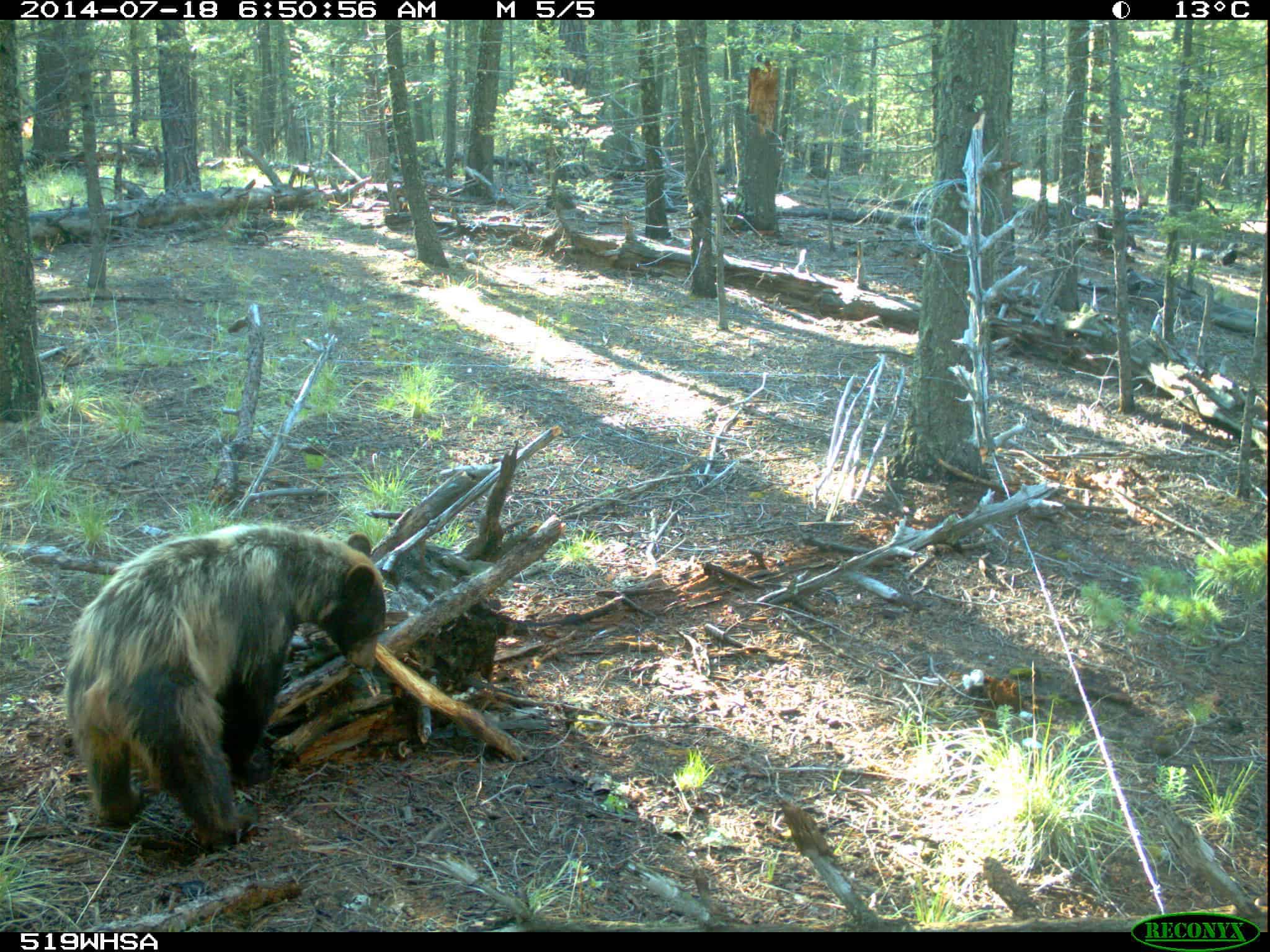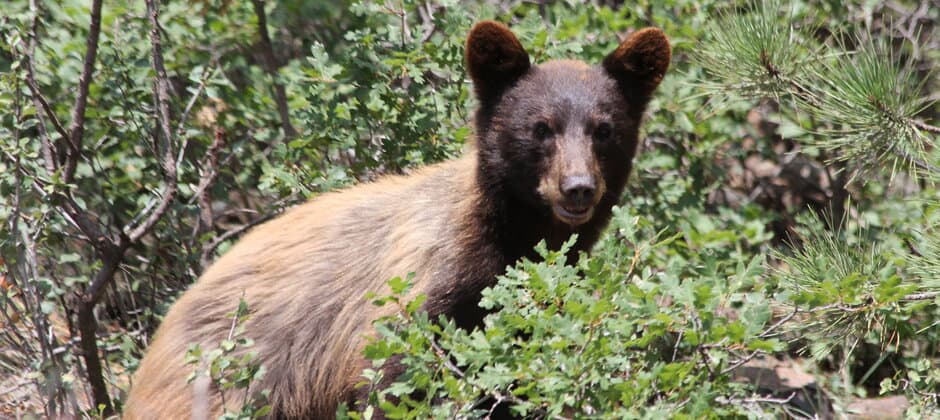Share this article
Southwestern black bears are isolated on mountain ranges
Black bear populations in the southwestern U.S. and northern Mexico can be divided into several genetically distinct groups that haven’t mixed much for thousands of years.
New research reveals that broad-scale climate variation since the last Ice Age is more responsible for the lack of connectivity between these populations than relatively newer issues like human changes to the landscape.

Bears in the Southwest lived in six major ecoregions. Credit: Matthew Gould
In a study published recently in Ecology and Evolution, Matthew Gould, a biologist with the Interagency Grizzly Bear Study Team at the U.S. Geological Survey, and his colleagues analyzed genetic samples taken from 550 black bears (Ursus americanus). They extracted DNA from hair samples, tissue samples from legally harvested bears, and blood samples from other research. All these were collected from Arizona, western Texas, southern Utah, northern Mexico, southern Colorado and New Mexico.

Bears in the Southwest lived in six major ecoregions. Credit: USGS, New Mexico Cooperative Fish and Wildlife Research Unit
The genetic analysis revealed that these bears could be divided into six larger populations, which might further be subdivided into 14 subpopulations. The six larger populations mostly correspond with major ecoregions in the area. The 14 smaller subpopulations corresponded with montane sky islands scattered throughout the region.
The research Gould led, which was part of his PhD thesis at New Mexico State University, shows that there are varying degrees of connectivity among these areas. Gould said this is mostly because the bears tend to prefer montane forests found at higher altitudes. In this part of the country, these forests basically only exist above a certain elevation. In between these mountain ranges is mostly desert or grasslands—areas black bears prefer to stay clear from.

Researchers analyzed the genetics of black bears in the U.S. and Mexico. Credit: USGS, New Mexico Cooperative Fish and Wildlife Research Unit
More specifically, Gould said that four factors tended to promote black bear connectivity in the study region: increasing canopy height; precipitation; decreasing ruggedness; and geographic distance. Essentially, black bear genes flow more easily in less rugged, forested habitat and where populations are relatively close to each other geographically.
The study provides a baseline of information about how the black bear populations in the Southwest are connected. It also provides guidance about what areas might be important to conserve to keep the smaller subpopulations connected to each other. By using this population information, biologists could better understand how roads or other types of development might affect connectivity in the future, for example. It could also help explain how the increasingly hotter and larger wildfires occurring in the Southwest might affect bear population health in some areas, Gould said.
Header Image:
Black bear populations are often separated by grasslands where the animals don’t prefer to cross.
Credit: Matthew Gould








